300 scholarly books by Brandeis University Press and 22
have author last names that start with K
300 scholarly books by Brandeis University Press and 22
300 scholarly books by Brandeis University Press
22 have author last names that start with K have author last names that start with K
22 have author last names that start with K have author last names that start with K
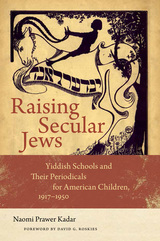
Raising Secular Jews
Yiddish Schools and Their Periodicals for American Children, 1917–1950
Naomi Prawer Kadar
Brandeis University Press, 2016
This unique literary study of Yiddish children’s periodicals casts new light on secular Yiddish schools in America in the first half of the twentieth century. Rejecting the traditional religious education of the Talmud Torahs and congregational schools, these Yiddish schools chose Yiddish itself as the primary conduit of Jewish identity and culture. Four Yiddish school networks emerged, which despite their political and ideological differences were all committed to propagating the Yiddish language, supporting social justice, and preparing their students for participation in both Jewish and American culture. Focusing on the Yiddish children’s periodicals produced by the Labor Zionist Farband, the secular Sholem Aleichem schools, the socialist Workmen’s Circle, and the Ordn schools of the Communist-aligned International Workers Order, Naomi Kadar shows how secular immigrant Jews sought to pass on their identity and values as they prepared their youth to become full-fledged Americans.
[more]
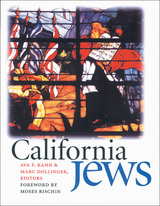
California Jews
Ava F. Kahn
Brandeis University Press, 2011
The nation’s thirty-first state emerged early as one of its most diverse as people immigrated to the west. California’s indigenous tribes were forced off their lands first by Spanish settlers, then by the arrival of gold miners from every corner of the world. Because of its Catholic missionary history, Gold Rush California did not experience a more exclusive eastern-style Protestantism. This permitted more rapid and inclusive acculturation. California Jews, unlike their eastern counterparts whose arrival often followed that of European Protestants, were often among the first settlers to establish a west coast community. Jewish immigrants to California took advantage of its physical environment, ethnic diversity, and cultural distinctiveness to fashion a form of Judaism unique in the American experience. California Jews enjoyed unprecedented access to political power a generation earlier than their New York counterparts. They thrived in the multicultural mix, redefining the classic black-white racial binary by forging relations with a variety of religious and ethnic groups in both San Francisco and Los Angeles.
[more]

Canine Pioneer
The Extraordinary Life of Rudolphina Menzel
Susan Martha Kahn
Brandeis University Press, 2022
An insightful look at the life and legacy of a pioneer cynologist between Europe and Israel.
Rudolphina Menzel (née Waltuch, 1891–1973), was a Viennese-born, Jewish scientist whose pioneering research on canine psychology, development, and behavior fundamentally shaped the ways dogs came to be trained, cared for, and understood. Between the two world wars, Menzel was known throughout Europe as one of the foremost breeders and trainers of police dogs and served as a sought-after consultant at Kummersdorf, the German military dog training institute in Berlin. She was also a fervent Zionist who was responsible for inventing the canine infrastructure in what came to be the State of Israel and for training hundreds of dogs to protect Jewish lives and property in pre-state Palestine. Teaching Jews to like dogs and training dogs to serve Jews became Menzel’s unique kind of Zionist mission. Detailed and insightful, Canine Pioneer: The Extraordinary Life of Rudolphina Menzel brings to light an important piece of history.
Rudolphina Menzel (née Waltuch, 1891–1973), was a Viennese-born, Jewish scientist whose pioneering research on canine psychology, development, and behavior fundamentally shaped the ways dogs came to be trained, cared for, and understood. Between the two world wars, Menzel was known throughout Europe as one of the foremost breeders and trainers of police dogs and served as a sought-after consultant at Kummersdorf, the German military dog training institute in Berlin. She was also a fervent Zionist who was responsible for inventing the canine infrastructure in what came to be the State of Israel and for training hundreds of dogs to protect Jewish lives and property in pre-state Palestine. Teaching Jews to like dogs and training dogs to serve Jews became Menzel’s unique kind of Zionist mission. Detailed and insightful, Canine Pioneer: The Extraordinary Life of Rudolphina Menzel brings to light an important piece of history.
[more]
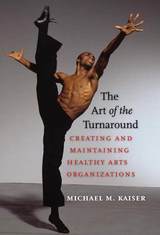
The Art of the Turnaround
Creating and Maintaining Healthy Arts Organizations
Michael M. Kaiser
Brandeis University Press, 2008
Many arts organizations today find themselves in financial difficulties because of economic constraints inherent in the industry. While other companies can improve productivity through the use of new technologies or better systems, these approaches are not available in the arts. Hamlet requires the same number of performers today as it did in Shakespeare’s time. The New York Philharmonic requires the same number of musicians now as it did when Tchaikovsky conducted it over one hundred years ago. Costs go up, but the size of theaters and the price resistance of patrons limit what can be earned from ticket sales. Therefore, the performing arts industry faces a severe gap between earnings and expenses. Typical approaches to closing the gap—raising ticket prices or cutting artistic or marketing expenses—don’t work. What, then, does it take to create and maintain a healthy arts organization? Michael M. Kaiser has revived four major arts organizations: the Kansas City Ballet, the Alvin Ailey American Dance Theater, American Ballet Theatre, and London’s Royal Opera House. In The Art of the Turnaround he shares with readers his ten basic rules for bringing financially distressed arts organizations back to life and keeping them strong. These rules cover the requirements for successful leadership, the pitfalls of cost cutting, the necessity of extending the programming calendar, the centrality of effective marketing and fund raising, and the importance of focusing on the present with a positive public message. In chapters organized chronologically, Kaiser brings his ten rules vividly to life in discussions of the four arts organizations he is credited with saving. The book concludes with a chapter on his experiences at the John F. Kennedy Center for the Performing Arts, an arts organization that needed an artistic turnaround when he became the president in 2001 and that today exemplifies in practice many of the ten rules he discusses throughout his book.
[more]
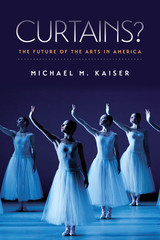
Curtains?
The Future of the Arts in America
Michael M. Kaiser
Brandeis University Press, 2015
In this clear-minded but sobering book, Michael M. Kaiser assesses the current state of arts institutions—orchestras; opera, ballet, modern dance, and theater companies; and even museums. According to Kaiser, new developments in the twenty-first century, including the Internet explosion, the death of the recording industry, the near-death of subscriptions, economic instability, the focus on STEM education in schools, the introduction of movie-theater opera, the erosion of newspapers, the threat to serious arts criticism, and the aging of the donor base have together created tremendous challenges for all arts organizations. Using Michael Porter’s model of industry structure to describe how industries evolve, Kaiser argues persuasively that unless steps are taken now, midsized performing arts institutions will have all but evaporated by 2035. Only the largest arts organizations will survive, with tickets priced for the very wealthy and programming limited to the most popular and lucrative productions. Kaiser concludes with a call to arms. With three extraordinary decades’ experience as an arts administrator behind him, he advocates passionately for risk-taking in programming and more creative marketing, and details what needs to happen now—building strong donor bases, creating effective boards, and collective action—to sustain the performing arts for generations to come.
[more]
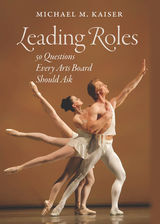
Leading Roles
50 Questions Every Arts Board Should Ask
Michael M. Kaiser
Brandeis University Press, 2010
Not-for-profit arts organizations struggled to survive the recent economic recession. In this increasingly hardscrabble environment, it is absolutely imperative that the boards of these organizations function as energetically, creatively, and efficiently as possible. Michael M. Kaiser’s personal history with boards of arts organizations began when he served on the board of the Washington Opera (now the Washington National Opera) in 1983. Today, in his capacity as president of the John F. Kennedy Center for the Performing Arts, Kaiser recently completed a 50-state, 69-city Arts in Crisis tour. Board issues came up repeatedly as central to the success or failure of the organization. Drawing on these and many other conversations, nationally and internationally, Kaiser’s book offers members of boards and staffs the information they need to create the healthy atmosphere necessary to thriving arts organizations. Organized in a clear, readable, question-and-answer format, Leading Roles covers every aspect of board participation in the life of the organization, including mission and governance; fundraising and marketing responsibilities; the relationship of the board to the artistic director, executive director, and staff; and its responsibilities for planning and budgeting. Kaiser addresses boards in crisis, international boards, and boards of arts organizations of color. Throughout, he emphasizes the importance of transparency and clarity in the board’s dealings with its own members and those of the arts community of which it is a part, showing how anything less results in contentiousness that can immobilize an arts organization, or even tear it apart.
[more]
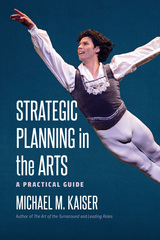
Strategic Planning in the Arts
A Practical Guide
Michael M. Kaiser
Brandeis University Press, 2018
Planning today is more important than ever. Both acquisition and allocation of resources are increasingly difficult for arts organizations as a result of emerging technologies, reduced arts education, aging donors, and the advent of new forms of entertainment. It is essential for arts organizations to take a coherent approach to these issues to remain vibrant over time. In fact, most arts organizations do periodically attempt some kind of planning exercise. But a review of hundreds of such plans suggests that most contain merely a wish list, rather than concrete plans for the future: “We will increase ticket sales!” is a common “strategy” expressed in too many arts plans. In the absence of details about how ticket sales will be increased, it’s an empty promise. In Strategic Planning in the Arts, Michael M. Kaiser, the former head of the Kennedy Center in Washington, DC, and an arts management guru, has produced a clear, concise guide for staff or board members of not-for-profit arts organizations who are responsible for developing, evaluating, or implementing plans. Relying on real-world cases and examples, Kaiser shows how to conceive, assess, and act on every part of the strategic plan, from the mission statement to the financial statement; from managing the board to marketing. Praise for Michael Kaiser: “A rich yet tidy cornucopia of solutions for the challenges facing the American arts scene.”—Washington Post
[more]
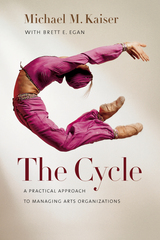
The Cycle
A Practical Approach to Managing Arts Organizations
Michael M. Kaiser
Brandeis University Press, 2013
In the third book of his popular trilogy on creating and sustaining arts organizations, Michael Kaiser reveals the hidden engine that powers consistent success. According to Kaiser, successful arts organizations pursue strong programmatic marketing campaigns that compel people to buy tickets, enroll in classes, and so on—in short, to participate in the organization’s programs. Additionally, they create exciting activities that draw people to the organization as a whole. This institutional marketing creates a sense of enthusiasm that attracts donors, board members, and volunteers. Kaiser calls this group of external supporters the family. When this hidden engine is humming, staff, board, and audience members, artists, and donors feel confidence in the future. Resources are reinvested in more and better art, which is marketed aggressively; as a result, the “family” continues to grow, providing even more resources. This self-reinforcing cycle underlies the activities of all healthy arts organizations, and the theory behind it can be used as a diagnostic tool to reveal—and remedy—the problems of troubled ones. This book addresses each element of the cycle in the hope that more arts organizations around the globe—from orchestras, theaters, museums, opera companies, and classical and modern dance organizations to service organizations and other not-for-profit cultural institutions—will be able to sustain remarkable creativity, pay the bills, and have fun doing so!
[more]
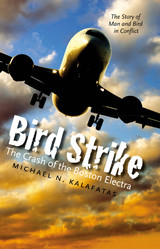
Bird Strike
The Crash of the Boston Electra
Michael N. Kalafatas
Brandeis University Press, 2010
On a warm and golden afternoon, October 4, 1960, a Lockheed Electra jet turboprop carrying 72 souls took off from Logan Airport. Seconds later, the plane slammed into a flock of 10,000 starlings, and abruptly plummeted into Winthrop Harbor. The collision took 62 lives and gave rise to the largest rescue mobilization in Boston’s history, which included civilians in addition to police, firefighters, skindivers, and Navy and Coast Guard air-sea rescue teams. Largely because of the quick action and good seamanship of Winthrop citizens, many of them boys in small boats, ten passengers survived what the Civil Aeronautics Board termed “a non-survivable crash.” Using firsthand interviews with survivors of the crash, rescuers, divers, aeronautics experts, and ornithologists, as well as a wide range of primary source material, Kalafatas foregrounds the story of the crash and its aftermath to anchor a broader inquiry into developments in the aeronautics industry, the increase in the number of big birds in the skies of North America, and the increasing danger of “bird strikes.” Along the way he looks into interesting historical sidelights such as the creation of Logan Airport, the transformation of Boston’s industrial base to new technologies, and the nature of journalistic investigations in the early 1960s. The book is a rare instance when an author can simultaneously write about a fascinating historical event and a clear and present danger today. Kalafatas calls for and itemizes solutions that protect both birds and the traveling public.
[more]
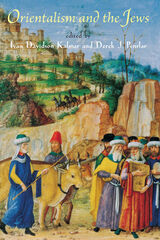
Orientalism and the Jews
Ivan Davidson Kalmar
Brandeis University Press, 2004
At the turn of the twenty-first century, in spite of growing globalization there remains in the world a split between the West and the rest. The manner in which this split has been imagined and represented in Western civilization has been the subject of intense cross-disciplinary scrutiny, much of it under the rubric of “orientalism.” This debate, sparked by the 1978 publication of Edward Said’s Orientalism identifies the “Orient” as the Islamic world and to a lesser extent Hindu India. “Orientalism” signifies the way the West imagined this terrain. Going beyond Said’s framework, in their introduction to the volume, Kalmar and Penslar argue that orientalism is based on the Christian West’s attempts to understand and manage its relations with both of its monotheistic Others—Muslims and Jews. According to the editors, Jews have almost always been present whenever occidentals talked about or imagined the East; and the Western image of the Muslim Orient has been formed and continues to be formed in inextricable conjunction with Western perceptions of the Jewish people. Bringing together essays by an array of international scholars in a wide range of disciplines, Orientalism and the Jews demonstrates that, since the Middle Ages, Jews have been seen in the Western world as both occidental and oriental. Jews formed the model for medieval depictions of Muslim warriors. Representations of biblical Jews in early modern Europe provided essential sustenance for Western fictions about the Muslim world. And many of the Western protagonists of imperialism “discovered” real or imaginary Jews wherever their expeditions took them. Today orientalist attitudes by Israelis target not only Arabs but also the mizrahi (“oriental”) Israelis with roots in the Arab world as Others.
[more]
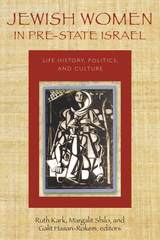
Jewish Women in Pre-State Israel
Life History, Politics, and Culture
Ruth Kark
Brandeis University Press, 2008
This fascinating interdisciplinary collection of essays brings gender issues to the foreground in order to redress a profound imbalance in the historiography of the Yishuv, the Jewish community in Palestine, and in the early years of the State of Israel. Although male discourse still dominates this field, some initial studies have begun to create an authentic and multifaceted Hebrew-Israeli voice by examining the activities and contributions of women. This research has led to a number of basic questions: What was the reality of life for women in Jewish society in Ottoman and Mandatory Palestine (Eretz Israel), and in the early years of the State? What was the contribution of women to the renewal of Israeli society and culture? What is the place of gender perceptions in the study of the new local identity? The original articles in this anthology forge an innovative response to one or more of these questions, and reflecting the state of research in the field.
[more]

Religion in China and Its Modern Fate
Paul R. Katz
Brandeis University Press, 2014
Paul R. Katz has composed a fascinating account of the fate of Chinese religions during the modern era by assessing mutations of communal religious life, innovative forms of religious publishing, and the religious practices of modern Chinese elites traditionally considered models of secular modernity. The author offers a rare look at the monumental changes that have affected modern Chinese religions, from the first all-out assault on them during the 1898 reforms to the eve of the Communist takeover of the mainland. Tracing the ways in which the vast religious resources (texts, expertise, symbolic capital, material wealth, etc.) that circulated throughout Chinese society during the late imperial period were reconfigured during this later era, Katz sheds new light on modern Chinese religious life and the understudied nexus between religion and modern political culture. Religion in China and Its Modern Fate will appeal to a broad audience of religionists and historians of modern China.
[more]

Jewhooing the Sixties
American Celebrity and Jewish Identity—Sandy Koufax, Lenny Bruce, Bob Dylan, and Barbra Streisand
David E. Kaufman
Brandeis University Press, 2012
Sandy Koufax, Lenny Bruce, Bob Dylan, and Barbra Streisand first came to public attention in the early 1960s, a period Kaufman identifies as historically ripe for American Jews to reexamine their (Jewish) identities. All four achieved extraordinary success in their respective fields and became celebrities within an American context, while at the same time they were clearly identifiable as Jews—although they were perceived to be Jewish in very different ways. Kaufman investigates these celebrities’ rise to fame, the specific brand of Jewishness each one represented, and how their fans and the public at large perceived their ethnic identity as Jews. Situating Koufax, Bruce, Dylan, and Streisand within the larger history of American Jewish celebrity, Kaufman argues that the four early 1960s figures represent a turning point between celebrity Jews of the past—such as Hank Greenberg, Groucho Marx, Irving Berlin, and Fanny Brice—and those of the present, such as Jon Stewart, Matisyahu, and Natalie Portman. Providing an entry into Jewish celebrity studies, this lively narrative explores the intersection between popular celebrity and Jewish identity and thereby examines the cultural construction of Jewishness in the latter half of the twentieth century.
[more]
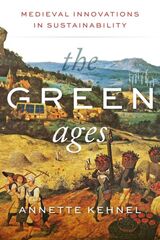
The Green Ages
Medieval Innovations in Sustainability
Annette Kehnel
Brandeis University Press, 2024
A fascinating blend of history and ecological economics that uncovers the medieval precedents for modern concepts of sustainable living.
In The Green Ages, historian Annette Kehnel explores sustainability initiatives from the Middle Ages, highlighting communities that operated a barter trade system on the Monte Subiaco in Italy, sustainable fishing at Lake Constance, common lands in the United Kingdom, transient grazing among Alpine shepherds in the south of France, and bridges built by crowdfunding in Avignon. Kehnel takes these medieval examples and applies their practical lessons to the modern world to prove that we can live sustainably—we’ve done it before!
From the garden economy in the mythical-sounding City of Ladies to early microcredit banks, Kehnel uncovers a world at odds with our understanding of the typical medieval existence. Premodern history is full of inspiring examples and concepts ripe for rediscovery, and we urgently need them as today’s challenges—finite resources, the twilight of consumerism, and growing inequality—threaten what we have come to think of as a modern way of living sustainably. This is a stimulating and revelatory look at a past that has the power to change our future.
In The Green Ages, historian Annette Kehnel explores sustainability initiatives from the Middle Ages, highlighting communities that operated a barter trade system on the Monte Subiaco in Italy, sustainable fishing at Lake Constance, common lands in the United Kingdom, transient grazing among Alpine shepherds in the south of France, and bridges built by crowdfunding in Avignon. Kehnel takes these medieval examples and applies their practical lessons to the modern world to prove that we can live sustainably—we’ve done it before!
From the garden economy in the mythical-sounding City of Ladies to early microcredit banks, Kehnel uncovers a world at odds with our understanding of the typical medieval existence. Premodern history is full of inspiring examples and concepts ripe for rediscovery, and we urgently need them as today’s challenges—finite resources, the twilight of consumerism, and growing inequality—threaten what we have come to think of as a modern way of living sustainably. This is a stimulating and revelatory look at a past that has the power to change our future.
[more]

Suddenly Jewish
Jews Raised as Gentiles Discover Their Jewish Roots
Barbara Kessel
Brandeis University Press, 2007
One woman learned on the eve of her Roman Catholic wedding. One man as he was studying for the priesthood. Madeleine Albright famously learned from the Washington Post when she was named Secretary of State. "What is it like to find out you are not who you thought you were?" asks Barbara Kessel in this compelling volume, based on interviews with over 160 people who were raised as non-Jews only to learn at some point in their lives that they are of Jewish descent. With humor, candor, and deep emotion, Kessel's subjects discuss the emotional upheaval of refashioning their self-image and, for many, coming to terms with deliberate deception on the part of parents and family. Responses to the discovery of a Jewish heritage ranged from outright rejection to wholehearted embrace. For many, Kessel reports, the discovery of Jewish roots confirmed long-held suspicions or even, more mysteriously, conformed to a long-felt attraction toward Judaism. For some crypto-Jews in the southwest United States (descendants of Jews who fled the Spanish Inquisition), the only clues to their heritage are certain practices and traditions handed down through the generations, whose significance may be long since lost. In Poland and other parts of eastern Europe, many Jews who were adopted as infants to save them from the Holocaust are now learning of their heritage through the deathbed confessions of their adoptive parents. The varied responses of these disparate people to a similar experience, presented in their own words, offer compelling insights into the nature of self-knowledge. Whether they had always suspected or were taken by surprise, Kessel's respondents report that confirmation of their Jewish heritage affected their sense of self and of their place in the world in profound ways. Fascinating, poignant, and often very funny, Suddenly Jewish speaks to crucial issues of identity, selfhood, and spiritual community.
[more]
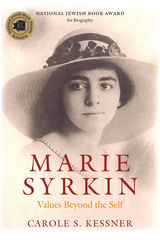
Marie Syrkin
Values Beyond the Self
Carole S. Kessner
Brandeis University Press, 2008
A compelling biography of an important eyewitness to the twentieth century.
Marie Syrkin’s life spanned ninety years of the twentieth century, 1899–1989. As a polemical journalist, socialist Zionist, poet, educator, literary critic, translator, and idiosyncratic feminist, she was an eyewitness to and reporter on most of the major events in America, Israel, and Europe. Beautiful as well as brilliant, she had a rich personal life as a lover, wife, mother, and friend. During her lifetime Syrkin’s name was widely recognized in the world of Jewish life and letters. Yet, since Syrkin’s death, recognition of her name is no longer quite so immediate. Carole S. Kessner’s biography restores Syrkin’s fascinating life and legacy for a new generation.
Marie Syrkin’s life spanned ninety years of the twentieth century, 1899–1989. As a polemical journalist, socialist Zionist, poet, educator, literary critic, translator, and idiosyncratic feminist, she was an eyewitness to and reporter on most of the major events in America, Israel, and Europe. Beautiful as well as brilliant, she had a rich personal life as a lover, wife, mother, and friend. During her lifetime Syrkin’s name was widely recognized in the world of Jewish life and letters. Yet, since Syrkin’s death, recognition of her name is no longer quite so immediate. Carole S. Kessner’s biography restores Syrkin’s fascinating life and legacy for a new generation.
[more]
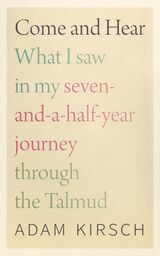
Come and Hear
What I Saw in My Seven-and-a-Half-Year Journey through the Talmud
Adam Kirsch
Brandeis University Press, 2021
A literary critic’s journey through the Talmud.
Spurred by a curiosity about Daf Yomi—a study program launched in the 1920s in which Jews around the world read one page of the Talmud every day for 2,711 days, or about seven and a half years—Adam Kirsch approached Tablet magazine to write a weekly column about his own Daf Yomi experience. An avowedly secular Jew, Kirsch did not have a religious source for his interest in the Talmud; rather, as a student of Jewish literature and history, he came to realize that he couldn’t fully explore these subjects without some knowledge of the Talmud. This book is perfect for readers who are in a similar position. Most people have little sense of what the Talmud actually is—how the text moves, its preoccupations and insights, and its moments of strangeness and profundity. As a critic and journalist Kirsch has experience in exploring difficult texts, discussing what he finds there, and why it matters. His exploration into the Talmud is best described as a kind of travel writing—a report on what he saw during his seven-and-a-half-year journey through the Talmud. For readers who want to travel that same path, there is no better guide.
Spurred by a curiosity about Daf Yomi—a study program launched in the 1920s in which Jews around the world read one page of the Talmud every day for 2,711 days, or about seven and a half years—Adam Kirsch approached Tablet magazine to write a weekly column about his own Daf Yomi experience. An avowedly secular Jew, Kirsch did not have a religious source for his interest in the Talmud; rather, as a student of Jewish literature and history, he came to realize that he couldn’t fully explore these subjects without some knowledge of the Talmud. This book is perfect for readers who are in a similar position. Most people have little sense of what the Talmud actually is—how the text moves, its preoccupations and insights, and its moments of strangeness and profundity. As a critic and journalist Kirsch has experience in exploring difficult texts, discussing what he finds there, and why it matters. His exploration into the Talmud is best described as a kind of travel writing—a report on what he saw during his seven-and-a-half-year journey through the Talmud. For readers who want to travel that same path, there is no better guide.
[more]
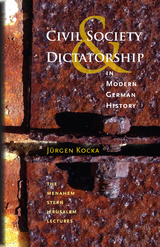
Civil Society and Dictatorship in Modern German History
Jürgen Kocka
Brandeis University Press, 2010
In this rich and thought-provoking work, Jürgen Kocka focuses his analytic lens on Germany’s long twentieth century, from the empire to the present. He begins by establishing the semantic problematic in the German term Bürgertum and presenting an analytical survey of German civil society over the past 120 years. He then offers a fascinating social history of the GDR, along with a comparative analysis of the East German dictatorship and that of the Third Reich. He further compares Germany’s “two dictatorships” in regard to historical memory, post-regime justice, and historiography before and after reunification. Kocka concludes with a wonderfully expansive view of historical interpretation and even argues for the place of trendiness and fashion in the profession.
[more]
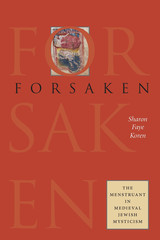
Forsaken
The Menstruant in Medieval Jewish Mysticism
Sharon Faye Koren
Brandeis University Press, 2011
This book addresses a central question in the study of Jewish mysticism in the medieval and early modern periods: why are there no known female mystics in medieval Judaism, unlike contemporaneous movements in Christianity and Islam? Sharon Faye Koren demonstrates that the male rejection of female mystical aspirations is based in deeply rooted attitudes toward corporeality and ritual purity. In particular, medieval Jewish male mystics increasingly emphasized that the changing states of the female body between ritual purity and impurity disqualified women from the quest for mystical connection with God. Offering a provocative look at premodern rabbinical views of the female body and their ramifications for women’s spiritual development, Koren compares Jewish views with medieval Christian and Muslim views of both female menstruation and the possibility of female mystical experience.
[more]
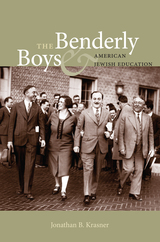
The Benderly Boys and American Jewish Education
Jonathan B. Krasner
Brandeis University Press, 2011
Samson Benderly inaugurated the first Bureau of Jewish Education in 1910 amid a hodgepodge of congregational schools, khayders, community Talmud Torahs, and private tutors. Drawing on the theories of Johann Pestalozzi, Herbert Spencer, and John Dewey, and deriving inspiration from cultural Zionism, Benderly sought to modernize Jewish education by professionalizing the field, creating an immigrant-based, progressive supplementary school model, and spreading the mantra of community responsibility for Jewish education. With philanthropist Jacob Schiff and influential laymen financing his plans, Benderly realized that his best hope for transforming the educational landscape nationwide was to train a younger generation of teachers, principals, and bureau leaders. These young men became known collectively as the “Benderly Boys,” who, from the 1920s to the 1970s, were the dominant force in Jewish education—both formal and informal—in the United States.
[more]
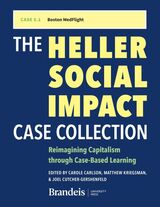
CASE 5.1 Boston MedFlight
Leveraging Data to Design a New Helicopter Algorithm
Matthew Kriegsman
Brandeis University Press, 2024
This case describes the potential introduction of a new helicopter operation named “Smart Launch” at the leading non-profit air ambulance of Boston MedFlight, with the goal of decreasing the estimated arrival time of transports and thereby improving patient outcomes. The case first provides a detailed background for how patient requests turn into successful transports, and thereafter outlines the estimated operational, financial and social impact of implementing this new operation. This is an excellent case for leveraging real transport data and management’s questions, with the challenge to determine if, how, and “what needs to be true?” to successfully unlock the new Smart Launch operation.
[more]
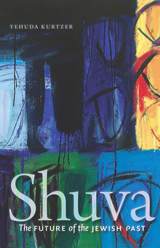
Shuva
The Future of the Jewish Past
Yehuda Kurtzer
Brandeis University Press, 2012
Modern Jews tend to relate to the past through “history,” which relies on empirical demonstration and rational thought, rather than through “memory,” which relies on the non-rational architectures of mythology. By now “history” has surpassed “memory” as a means of relating to the past—a development that falls short in building identity and creates disconnection between Jews and their collective history. Kurtzer seeks to mend this breach. Drawing on key classical texts, he shows that “history” and “memory” are not exclusive and that the perceived dissonance between them can be healed by a selective reclamation of the past and a translation of that past into purposefulness.
[more]
READERS
Browse our collection.
PUBLISHERS
See BiblioVault's publisher services.
STUDENT SERVICES
Files for college accessibility offices.
UChicago Accessibility Resources
home | accessibility | search | about | contact us
BiblioVault ® 2001 - 2024
The University of Chicago Press









